Warning: In this blog, we will be talking about a condition called pyometra, a secondary uterine infection that occurs when an unspayed female experiences hormonal changes. Pyometra can be fatal if left untreated, so we made the decision to include photos from the procedure to demonstrate just how serious this condition can be (which isn’t normally something we would do). Please proceed with caution if you are sensitive to the sight of blood or do not wish to see photos from the medical procedure. Thank you!
I’ve been in Stephanie’s shoes, and it’s a feeling that I wouldn’t wish on anyone. So if you have a pet, especially a female who isn’t spayed, please read.
When I first met Stephanie in our parking lot, I could tell she was doing her best to hold it together. Just by taking one look at her, I knew she’d been fighting back those tears in her eyes since she dropped her dog, Tiny, off for surgery that morning. Then, her first words to me shot a pain straight through my heart.
“I feel so guilty.”
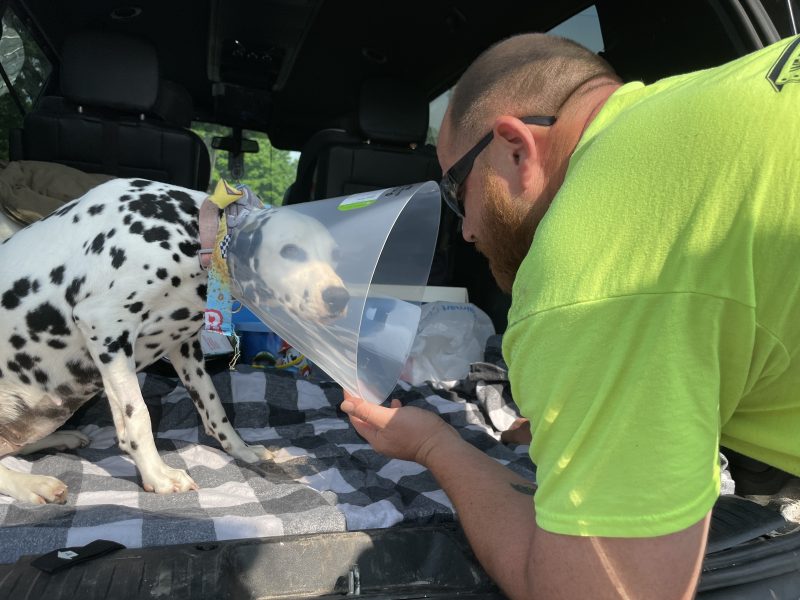
Ben, one of the vet techs here at PRC, and I reassured her that what had happened to Tiny wasn’t her fault—pyometra isn’t really something owners know about until their pet is diagnosed with it (that is, until now, hopefully). But I’d be lying if I said I didn’t feel the same way eight years ago.
I won’t go too much into it, but growing up, our dog, Misty, had pyometra. I was only a sophomore in high school, and it was the first time both my mom and I had ever heard of that condition. She was a beautiful weimaraner—only 7 years old—who had never had any litters, but she was never spayed either…
Thinking back on how scary it was to see her fight that terrible infection—and knowing it could’ve been prevented—it’s hard. I’m one of the lucky ones whose pet came out on the other side, but even then, I still wouldn’t hesitate to spay her if I had the power to turn back time.
So that’s why it’s important to Stephanie and me that we share our stories. Because…we’ve been there. But you still have time to be proactive and protect your pet from pyometra.
Tiny’s Story
It all started back when Stephanie was a young girl. She had the cutest little stuffed animal dalmatian that she named Tiny, and she took it with her everywhere she went. It got to the point where she was so attached to it that her parents decided it was time to let it go, which absolutely devastated her.
Fast forward to a year ago when Stephanie and her husband, Andrew, rescued the real Tiny. She was on a list to be euthanized at a clinic in Missouri, and you could barely tell she was a dalmatian because of how red and inflamed her skin was due to skin issues. On top of that, she had completely shut down from being in the shelter setting, and she did not want anything to do with people.
Now, she talks, she sings, she smiles. “She is just a good girl,” Stephanie says.
“My comfort.”
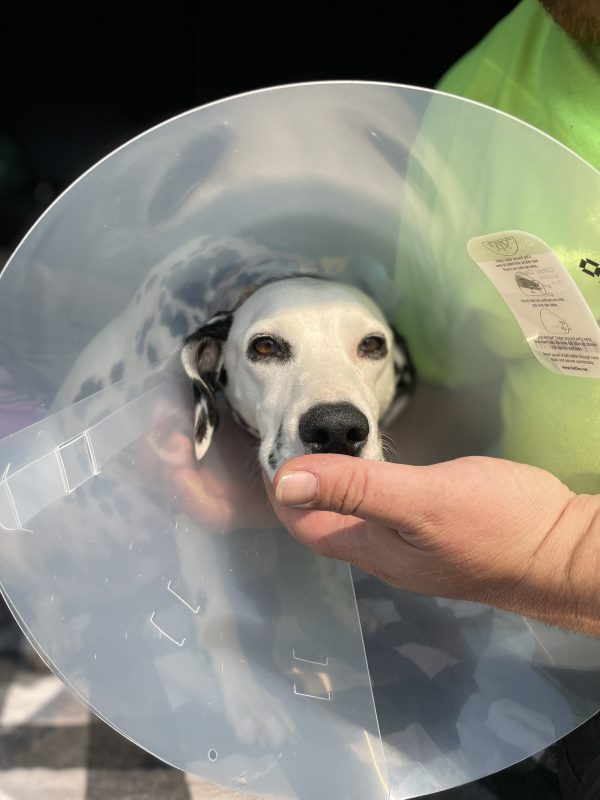
Recently, Stephanie, Andrew and their kids went out of town for a week to attend a graduation, so Tiny went to stay with her in-laws. When they got back, Stephanie noticed she seemed depressed. She thought maybe Tiny was just upset about being away from them for a week (she can be somewhat of a drama queen according to Stephanie, but that’s what makes Tiny Tiny).
But later that night as Tiny was laying on Stephanie’s bed, she seemed lethargic and bloated, and her belly was hard. Something was off, and Stephanie knew it was time to call.
Diagnosis and Treatment for Pyometra
We got Tiny inside for the examination of her distended belly, and our vet team started to rule out possible diagnoses. At first they thought there might’ve been a tumor in her stomach, but an ultrasound showed that her uterus was completely filled with fluid (pus, to be exact). Her symptoms, and the fact that she wasn’t spayed, all pointed to pyometra.
It was only Tuesday, and it was our third pyometra case of the week.
Pyometra is a secondary uterine infection that occurs when an unspayed female experiences hormonal changes. In Tiny’s case, it was a closed pyometra, meaning her cervix was closed and not allowing the infection to exit the body through the vulva like it normally would if it were open.
“If we would have waited a day or two more, it would have ruptured,” Ben said. And that would’ve led to the infection spilling into her abdominal cavity, which would then lead to sepsis. And if left untreated, death.
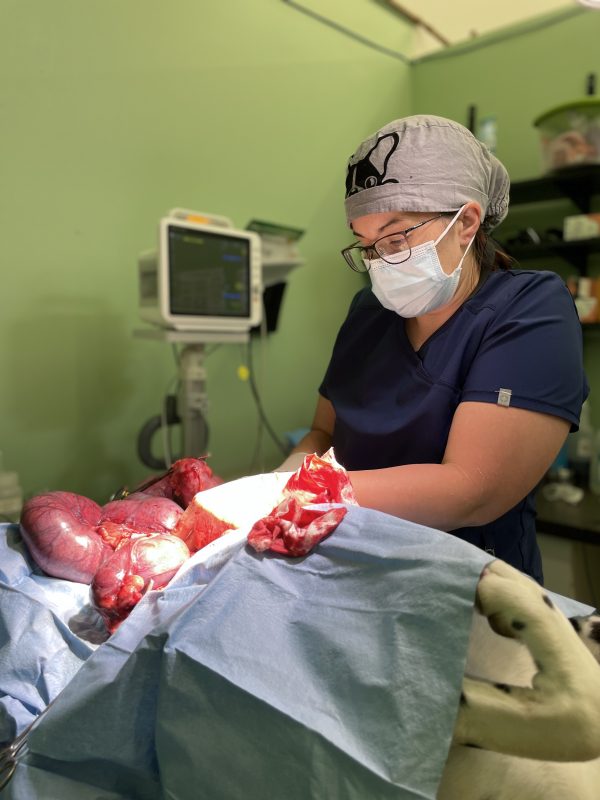
Blood work levels showed that Tiny’s liver and kidneys were working overtime to fight off the infection—and her body was tired—so Dr. Washington performed an ovariohysterectomy immediately; this is essentially a spay surgery, but one that requires much more time and delicacy to prevent the infection from spreading.
The massive, pus-filled uterus weighed in at 6.3 pounds and was five or six times the size of a normal, healthy uterus.
After it was removed, we placed the uterus inside a white towel to make sure there was no seepage (that would have told us that the pyometra ruptured and there was a possibility that some of the infection spread throughout the abdomen). Thankfully, it didn’t look like there was any, which is the best news Stephanie could’ve received.

We’ve spoken with Stephanie since, and Tiny is bouncing back like a champ. Here’s an brief update about her recovery:
“Tiny is working on feeling better with her comfy t-shirt and snuggly bear to keep her cozy and relaxed. [PRC] saved her life and educated not only me but now all of the other people Tiny has now educated with her story.”
Why We Do It
Education is a major component to setting pets and their owners up for success. And, sometimes, people just don’t know about the dangers or health risks their pets face. And that’s OK because we’re only human.
If there’s one thing we’ve learned throughout the past 20 years of working directly with families in Kansas City it’s that the end result is what counts, not how you get there. I can say that there’s absolutely no one in the world who loves and cares for Tiny more than her family, and it makes me proud knowing that my team and I will welcome everyone with love and open arms, no matter where they come from.
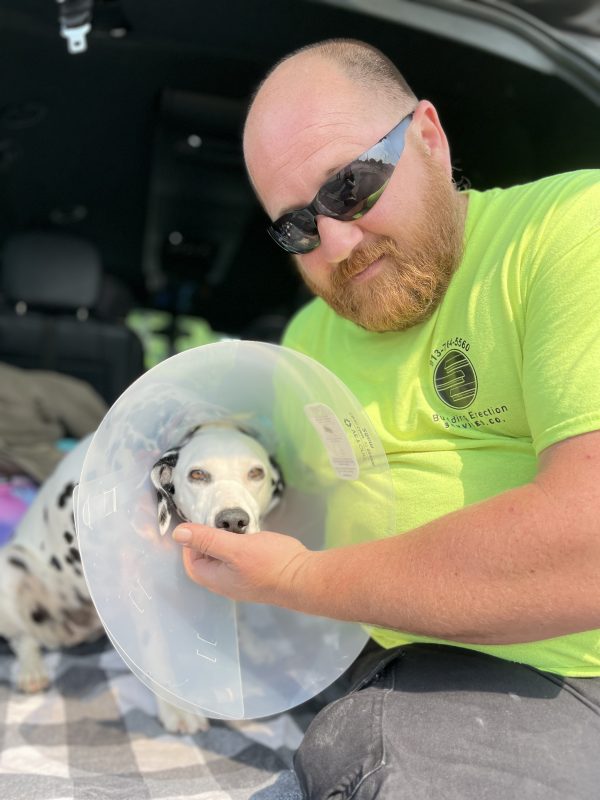
Special note: The PRCKC team would also like to thank the Lantz Tucker Memorial Fund for helping cover the cost of Tiny’s life-saving surgery. It’s because of community efforts like this one that we are able to impact the lives of so many pets in our community.
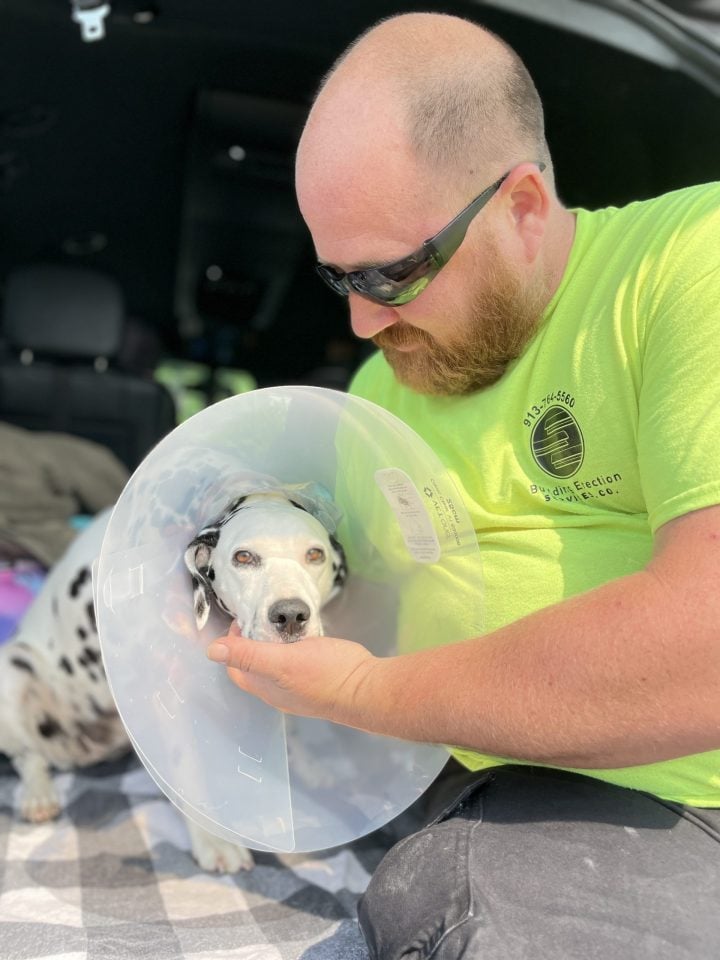
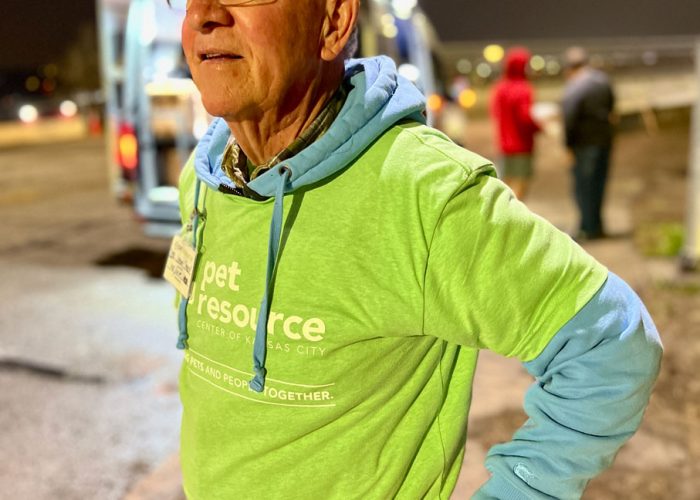
Thanks for educating people -always amazing that people know so little about their pets health . Some from abuse but many just not educated.
So very important !